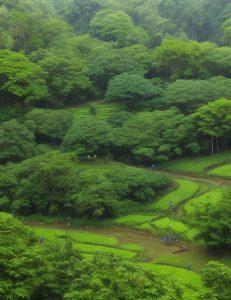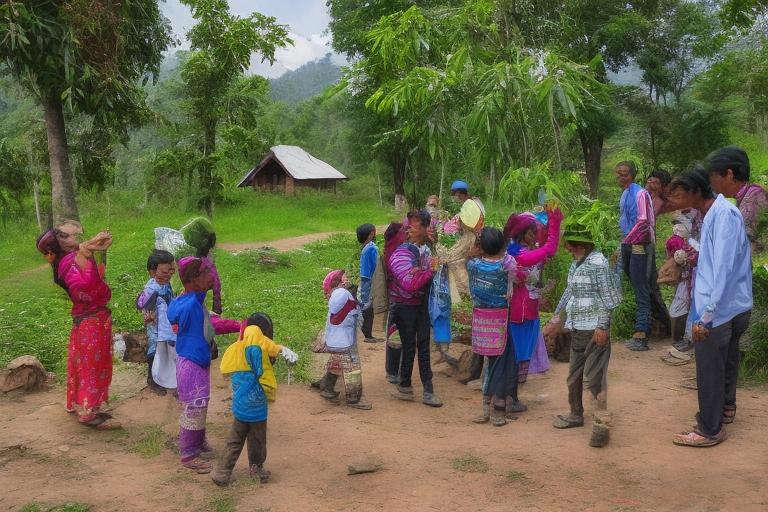The Community Forest in Nepal: A Haven of Sustainability
Introduction
Nestled within the breathtaking landscapes of Nepal lies a remarkable and sustainable solution to the global challenge of deforestation: community forests. These pockets of greenery are more than just a source of timber; they represent a harmonious relationship between people and nature, and their role in preserving biodiversity and fostering local development is nothing short of extraordinary.

Historical Context
Community forests in Nepal have a rich history that dates back centuries. Initially, forests were often seen as a communal resource, managed collectively by local communities. However, as population pressures grew and modernization took hold, forests faced unprecedented threats. In response, Nepal recognized the importance of rekindling the ancient tradition of community-based forest management.
Legal Framework
The legal framework supporting community forests in Nepal is robust. The 1978 Forest Act and subsequent policies ensure that local communities have rights to manage and benefit from nearby forests. This empowerment has been pivotal in reinvigorating forests and bolstering local livelihoods.
Biodiversity and Conservation
Community forests are crucial for conserving Nepal’s rich biodiversity. These forests serve as sanctuaries for countless plant and animal species. Conservation efforts here are not only preserving endangered flora and fauna but also demonstrating the coexistence of humans and nature.
Socioeconomic Impact
The positive impacts of community forests reach far beyond ecological benefits. Locals derive economic sustenance from these forests through timber, non-timber forest products, and eco-tourism. Furthermore, these forests promote social cohesion, as communities work together to protect and prosper from their shared resources.
Challenges and Threats
Yet, challenges abound. Climate change poses a significant threat, leading to changing weather patterns and impacting forest health. Additionally, socio-political issues can strain community cooperation.
Case Studies
Looking to success stories, the Barandabhar Community Forest in Chitwan stands out. Through sustainable forest management, it has become a model for balancing economic gains and conservation. Similar examples across Nepal showcase the power of community-driven stewardship.
Future Prospects
The potential for community forests in Nepal remains vast. With continued commitment to sustainable practices, these forests can expand further, promoting a greener future for generations to come.
Conclusion
The community forest in Nepal is a shining example of how humans and nature can coexist harmoniously. It reminds us that by empowering local communities and working together, we can not only halt deforestation but also rejuvenate our planet. Nepal’s community forests are a beacon of hope in the global fight against climate change and deforestation.



